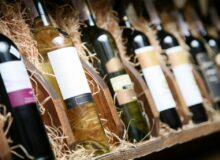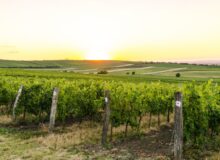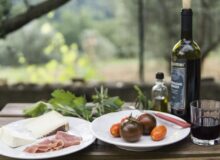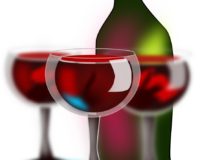The World’s Premier Wine Executive Program is at the UC Davis Graduate School of Management
I recently attended and graduated from the UC Davis Wine Executive Program. The UC Davis Graduate School of Management is rated in the top 5 schools. It was a privilege to be one of these graduates. This year there was a large waiting list for the Wine Executive Program.
The UC Davis Wine Executive Program is matchlessly designed to impart the details of winemaking and management skills necessary to be profitable in today’s challenging and dynamic wine industry. There is no other program like this program. It is the premier program. There really is no other as comprehensive and intense.
Importantly, the mission while you are there at UC Davis is receiving the knowledge from the faculty and trained professionals about the research efforts, research projects, understanding how the industry can invest in the developments and innovations. You get first hand exposure to this by the Department of Viticulture and Enology.
Most importantly it has a focus on Investors, developers, entrepreneurs and those looking to cross the threshold of the wine business will also gain critical advantage from the program.
You are in the mood for Pizza. Who isn’t??? What wine matches best with Pizza? So many great options to try!
Aglianico is probably the grape with the longest consumer history of all – the grape was the principal component of the world’s earliest first-growth wine! Drink it today!
What to they mean by ‘The Body’ of a wine? Let’s talk a little bit about it…
Wine has a Body?
Yes!!!
The Body: Is the real impression of “weight” of a wine in your mouth, That’s generally attributable essentially to a wine’s alcohol. You can classify a wine as light-bodied, medium-bodied, or full-bodied. But really, a wine’s body describes the “weight” and texture of a wine in your mouth — how a wine feels around your tongue. It’s called a “mouthfeel”.
That’s when more descriptors start to conjure…But that’s another world altogether.
So, let’s say generally, too little alcohol will cause acidity and astringency to dominate, making the wine harsh and thin. Too little acid and astringency will cause a wine to taste overly soft, heavy and flabby, with the spirity quality of the alcohol playing too much of a role.
Well there you go and that’s a start!
The Answer is Yes! Great Australian Cabernet Sauvignon! So let’s get on with the Key Australian Cabernet Sauvignon Regions!
Some of my favorites are from Mclaren Vale…seek Mitolo Jester, Two Hands and Kangarilla Road.
How do I find a wine I like? How do I find the winners?.. because budget wines are hitting a quality level that is worth seeking!
Wines for the Thanksgiving season are Excellent with Turkey, Chicken and Fish dishes.
Here is America ‘Chablis’ lost its social status when it became the preferred name for jug wine in the U.S., however this classy white is far from a flat, bland bulk wine. Also made from 100% Chardonnay, it has little and most often no oak, boasting crisp, mineral-spiked sips.
Quick Tips for Restaurants and staff on Training and Selling Wine to your eager Guests!
A “boot camp” approach, that is a lengthy and intense training session, may work for new hires already conversant in wine, but will be overwhelming for a novice, and probably soon forgotten.
“Boot camps” do nothing to reinforce the knowledge of long time employees.
Try this…
By incorporating ongoing training into the weekly or bi-weekly routine, information is more easily retained by the staff. A great time to do this is during pre-shift meetings.
By focusing on specific subjects, and doing controlled, limited tastings (small pours and spit cups required!), your staff will remember concrete talking points that they can relay to the guest and can use to sell your list.
Also, enrolling wine wines classes taught by one with some experience such as the FDRP, WSET, SWE or CMS is a plus. An outside tutor for example. Establishing a relationship with a wine expert that can be a conduit to your staff. And don’t forget to see if your vendor(s) can host a session on upcoming wines!
Certification should be encouraged as incentive for higher earning potential. Especially if it results in the extra 2 or 3 bottles sold nightly. Everybody wins! The restaurant wins, the server wins and of course… the customer wins too!
So… selling wine properly is not only very profitable to the business. It keeps your existing customers base happy and it attracts new customers constantly. It really does! …and it helps when you take the small rewarding steps with thoughtful training.
We often lose track of the fact that the service staff is also the sales staff and arming the staff with knowledge is the smart thing to do.
Some California Reds have provided Sheer Greatness in a relatively Short period of time!
California has an endless amount of excellent red wines and a lot of them are as either as good or more legendary than Old World French Bordeaux, Italian Chianti and Barolo’s and Spanish Tempranillo and Garnacha. In many cases the Old World knowledge has lent it’s ways to the California Terroir; but most of the time it’s been sheer greatness in a relatively short period of time.
Here are some of my California favorites…Including one from Washington State that is on my mind and fits the mold…







